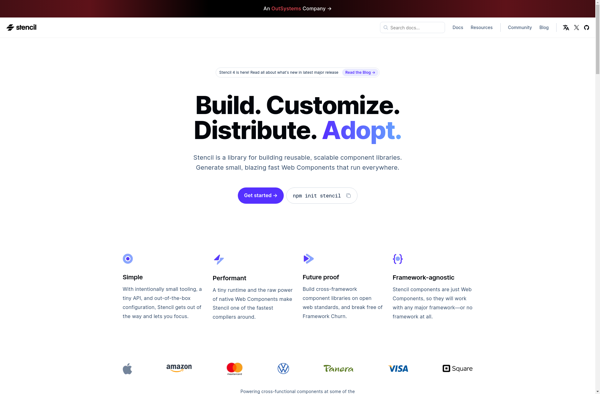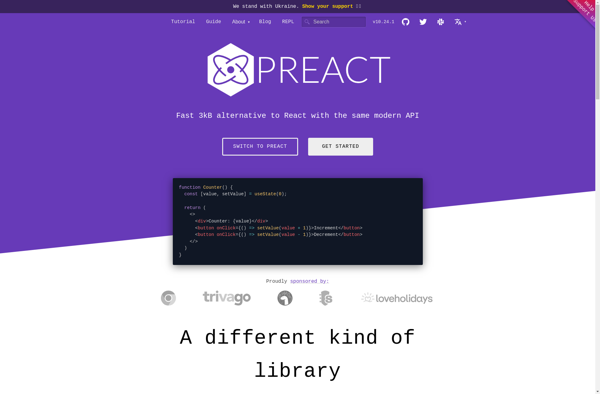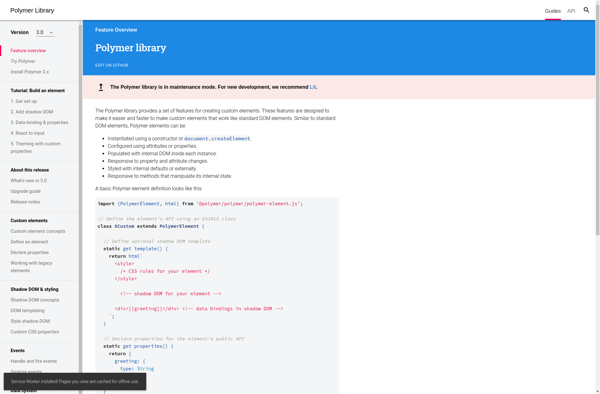Stenciljs

StencilJS: Open-Source Toolkit for Building Reusable Web Components
StencilJS is an open-source toolkit for building reusable, standalone Web Components using TypeScript. It focuses on creating smaller, faster components that work natively in modern browsers without needing large frameworks or runtimes. Stencil components work with popular frameworks like React, Angular, and Vue.
What is Stenciljs?
StencilJS is an open-source toolkit created by the Ionic Team for building reusable, standalone Web Components using TypeScript. Unlike traditional frameworks, Stencil focuses on generating smaller, faster components that work natively in modern browsers without needing large frameworks or runtimes.
Here are some key features of StencilJS:
- Lets you create customizable Web Components using TypeScript and JSX
- Components work natively without frameworks due to compiled output
- Focused on blazing fast load times by generating lean, tree-shakeable components
- Interoperability with React, Angular, Vue and other frameworks
- Supports TypeScript features like types, decorators, generics and more
- Simple tooling - components are generated at compile time without a dev server runtime
Stencil is ideal for UI component libraries and design systems intended to work across frameworks. Companies like Ionic, Bit and Openbase are using StencilJS to build their component libraries. The compiled output targets the web standards-based Web Components platform, allowing the components to run natively in browsers without heavy dependencies.
Stenciljs Features
Features
- Compiles to Web Components
- Works with popular frameworks
- Focused on performance
- TypeScript support
- Small runtime footprint
Pricing
- Open Source
Pros
Cons
Official Links
Reviews & Ratings
Login to ReviewThe Best Stenciljs Alternatives
Top Development and Javascript Frameworks and other similar apps like Stenciljs
Here are some alternatives to Stenciljs:
Suggest an alternative ❐Vue.js

Ember.js

SolidJS

Preact

AngularJS

Backbone.js

Svelte

Polymer

KnockoutJS

Marko

QCObjects
